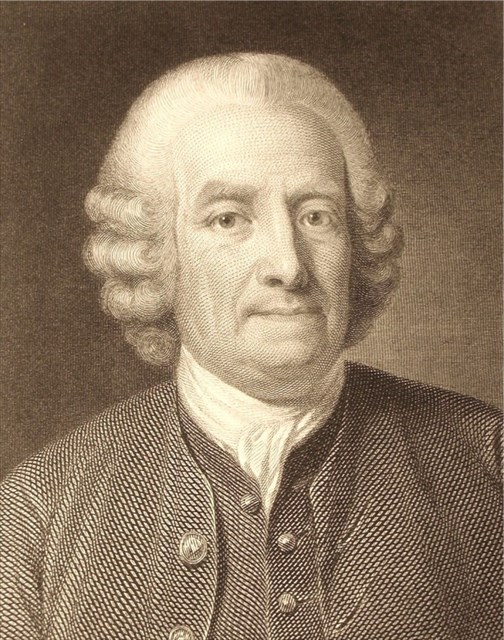-
Difficulty:
-

-
Terrain:
-

Size:  (micro)
(micro)
Related Web Page
Please note Use of geocaching.com services is subject to the terms and conditions
in our disclaimer.
The cache, a small container, is located in Swedenborg Gardens. This is a public park named in honour of Emanuel Swedenborg.

Emanuel Swedenborg (1688-1772) was a Swedish scientist, philosopher, theologian and Christian mystic.
During the 1730s Swedenborg undertook many studies of anatomy and physiology. He came up with several ideas that anticipated modern discoveries by 100 years. In particular, he claimed that the frontal cortex of the brain had a key role in sensory, motor and cognitive functions; and he had a theory based on neurons, even though they had not been discovered in his time.
At the age of 56 he began to experience dreams and visions.
For the next 27 years Swedenborg made almost daily excursions through Heaven and Hell, heard the meaning of the Scriptures expounded by angels, spirits and God. He claimed he was appointed by God to write a heavenly doctrine to reform Christianity. He claimed that God had opened his spiritual eyes, so that from then on he could freely visit heaven and hell, and talk with angels, demons and other spirits.
He claimed that the Last Judgement had already occurred, in 1757, although only visible in the spiritual world, where he had witnessed it; and that Judgement was followed by the Second Coming of Jesus Christ, but rather than a return in person, Jesus had told Swedenborg that he had been chosen to publish God's Word.
In Life on Other Planets, Swedenborg claimed that he conversed with spirits from Jupiter, Mars, Mercury, Saturn, Venus, and the Moon. He did not report conversing with spirits from Uranus and Neptune, which were not yet discovered. This lack is seen by some to raise question about the credibility of all his reports on this matter.
A variety of important cultural figures, both writers and artists, were influenced by Swedenborg, including Johnny Appleseed, William Blake, Jorge Luis Borges, Daniel Burnham, Arthur Conan Doyle, Ralph Waldo Emerson, John Flaxman, George Inness, Henry James Sr., Carl Jung, Immanuel Kant, Honoré de Balzac, Helen Keller, Czesław Miłosz, August Strindberg, D. T. Suzuki, and W. B. Yeats.
Helen Keller wrote that "the teachings of Emanuel Swedenborg have been my light, and a staff in my hand and by his vision splendid I am attended on my way."
In 1766, Kant wrote a scathing critique of Swedenborg and his writings, calling him a “spook hunter”
Swedish trade links with London have existed for many hundreds of years but grew rapidly in the 17th century. With so many Swedish sailors, traders, bankers, shop keepers and business men coming and going in London it is not surprising that eventually a Swedish Church was necessary to serve their religious needs. Thus in 1710 a Swedish congregation was formed and in 1728 the Ulrika Eleonora Church was built.
Because this church was the centre for Swedish people in London it is not surprising that on his death, Emanuel Swedenborg’s body was laid to rest in the vaults. And there it would have probably remained to this day had not the need to develop and build in London at the beginning of the 20th century forced the demolition of the 200 year old Ulrika Eleonora church. The church closed in 1910 and was finally demolished in 1921.
The ground on which the church stood was made into a garden and in 1938 Princes Square was renamed Swedenborg Gardens.
Additional Hints
(Decrypt)
Zntargvp.
2z hc
Haqre gungpurq ebbs